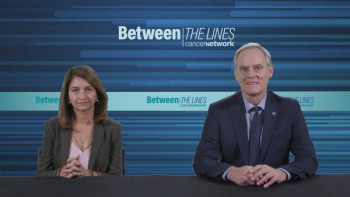
Differential Toxicity Profile: Tarlatamab vs Traditional Cytotoxic Therapies
Panelists discuss how tarlatamab’s toxicity profile differs from traditional cytotoxic therapies, highlighting its immune-related adverse effects such as cytokine release syndrome and immune effector cell–associated neurotoxicity syndrome, while noting its lower risk of myelosuppression and long-term organ damage compared with chemotherapy, which tends to cause cumulative toxicities such as bone marrow suppression.
Episodes in this series

Summary for Physicians:
Differential Toxicity Profile: Tarlatamab vs Traditional Cytotoxic Therapies
- Tarlatamab (immunotherapy):
- Immune-related toxicities: Includes cytokine release syndrome, immune effector cell–associated neurotoxicity syndrome, and immune-related adverse events (eg, rash, colitis)
- Less myelosuppression compared with traditional chemotherapy
- Onset of adverse effects is typically within 24 to 48 hours post infusion
- Traditional cytotoxic therapies:
- Common toxicities: Myelosuppression, nausea/vomiting, alopecia, fatigue, and mucositis
- Delayed onset of adverse effects (often seen after several cycles)
- Dose-limiting toxicities often related to bone marrow suppression
Key Differences:
- Tarlatamab may cause acute immune reactions but spares long-term organ damage compared with cytotoxic therapies.
Traditional chemotherapies are associated with cumulative toxicities over time, particularly myelosuppression, which is less of a concern with tarlatamab.
Newsletter
Stay up to date on recent advances in the multidisciplinary approach to cancer.















































































